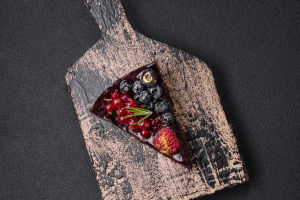Baguettes are a symbol of French culture, Lykkers!
🥖 Have you ever bitten into a fresh, crispy baguette and felt like you were strolling through the streets of Paris? Let’s dive into the world of this iconic bread and discover why it has captivated taste buds around the globe.
What Is a Baguette?
A baguette is a long, thin loaf of French bread known for its crispy crust and soft, airy interior. Typically around 65 cm (about 26 inches) in length, baguettes have a golden-brown exterior and are often served as a staple at meals, accompanying everything from soups and salads to cheese and charcuterie. The simplicity of its ingredients—flour, water, yeast, and salt—is what makes the baguette so special.
The History of the Baguette
The baguette has a rich history that dates back to the 19th century. While the exact origin is debated, it is widely believed that the baguette became popular in Paris due to a new law that prevented bakers from working before 4 am. Traditional round loaves took longer to prepare, so bakers started making thinner, elongated bread that could bake more quickly, thus giving birth to the baguette. Since then, it has become an iconic symbol of French culinary tradition.
How Baguettes Are Made
The process of making a baguette may seem simple, but it requires precision and skill to get it just right. Here’s a quick overview of how baguettes are crafted:
1. Mixing: Combine flour, water, yeast, and salt to form a dough. The dough should be soft and sticky.
2. Kneading: Knead the dough until it is smooth and elastic. This helps develop the gluten, which is essential for the baguette’s texture.
3. Fermentation: Let the dough rest for a few hours to allow the yeast to work its magic, producing gas bubbles that will give the bread its airy texture.
4. Shaping: Divide the dough into portions and shape each piece into a long, thin loaf. Proper shaping is key to achieving the classic baguette look.
5. Scoring and Baking: Before baking, the loaves are scored with a sharp blade. This allows the bread to expand and gives the baguette its characteristic “ears” or ridges. Bake at a high temperature to get a crispy crust and a soft interior.
Why Is the Baguette So Popular?
The baguette is not just bread; it’s a part of daily life in France. There are many reasons why this humble loaf has gained international popularity:
1. Versatility: Baguettes can be enjoyed in numerous ways—sliced with butter for breakfast, dipped in soup, or used as the base for sandwiches. The possibilities are endless!
2. Freshness: Because baguettes are usually baked and sold the same day, they are always fresh and flavorful.
3. Tradition: The process of making baguettes has been passed down through generations, preserving the art of traditional French baking.
Different Ways to Enjoy a Baguette
There are countless ways to savor a baguette. Here are a few popular options:
1. Classic Sandwich: Slice the baguette lengthwise, add your favorite fillings—like cheese, vegetables, and meats—and you have a delicious sandwich. One popular choice is the Jambon-beurre, a simple yet satisfying French sandwich with butter.
2. Toasted with Toppings: Toast baguette slices and add a variety of toppings such as avocado, smoked salmon, or a drizzle of olive oil and garlic. This makes for a quick and tasty snack.
3. Paired with Cheese: Baguettes pair perfectly with a variety of cheeses. The crisp crust and soft interior provide the ideal contrast to creamy or hard cheeses, making it a must-have for any cheese platter.
Why You Should Try Baking a Baguette
Baking a baguette at home can be a rewarding experience. It might take a few attempts to get it just right, but the result is worth it. The aroma of a freshly baked baguette filling your kitchen is truly irresistible. Plus, you can customize it by adding ingredients like herbs, seeds, or olives for a unique twist.
So, Lykkers, whether you pick one up from your local bakery or try your hand at baking it yourself, a baguette is more than just bread—it’s a slice of French culture. 🥖 Next time you enjoy one, take a moment to appreciate its rich history and delightful taste!


